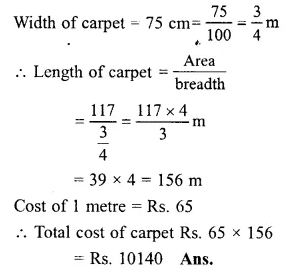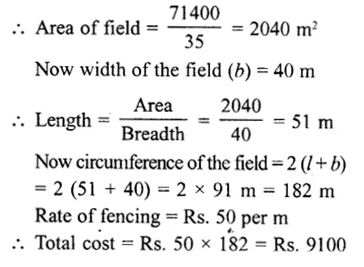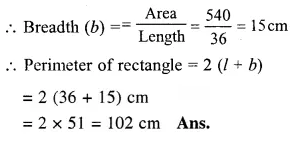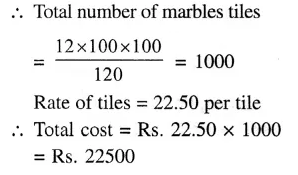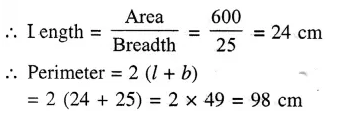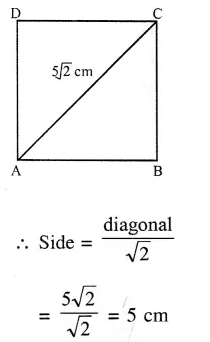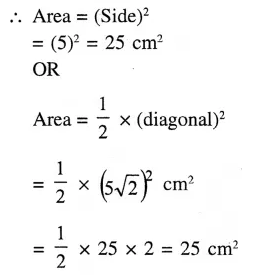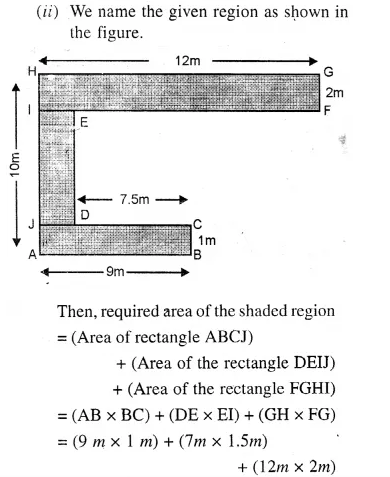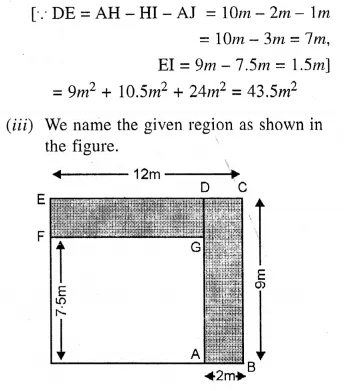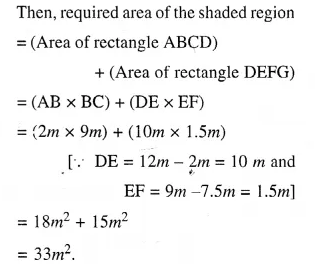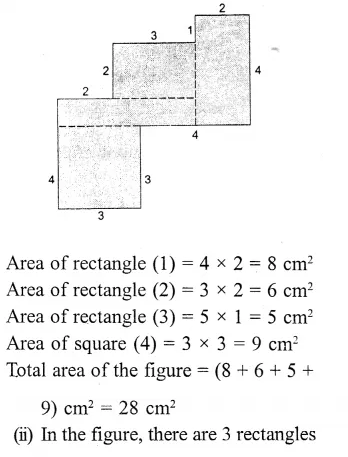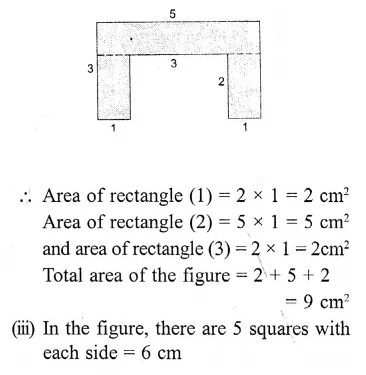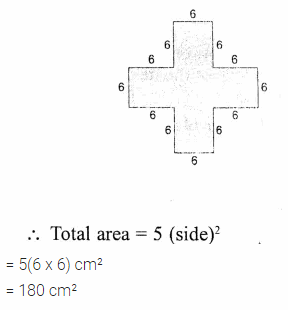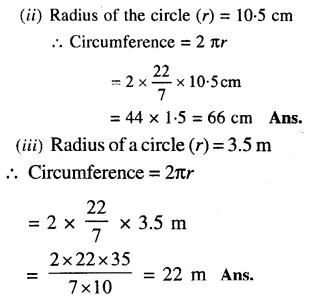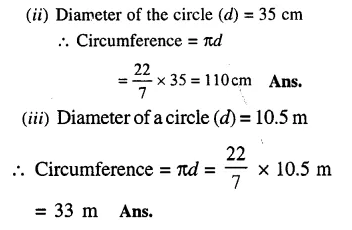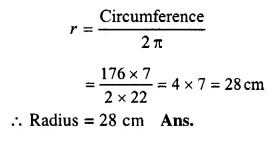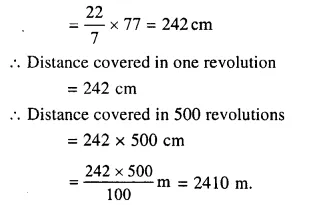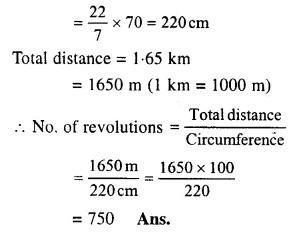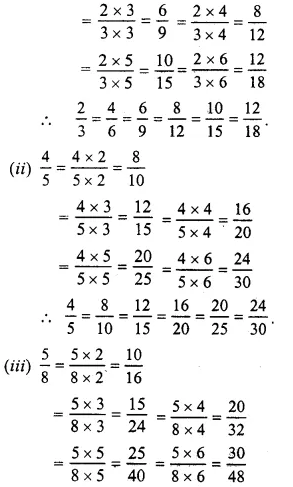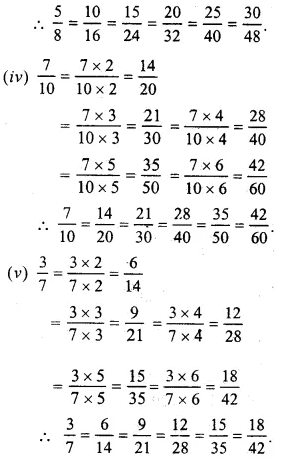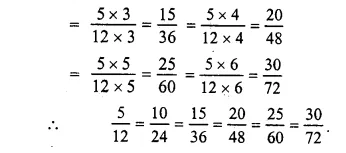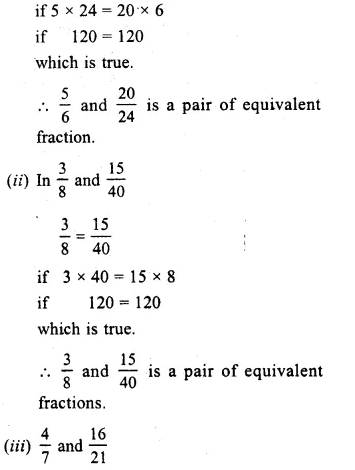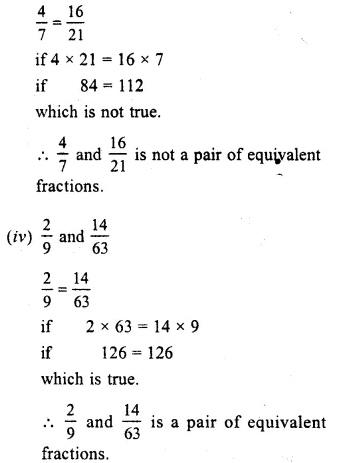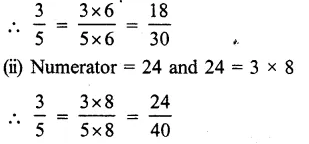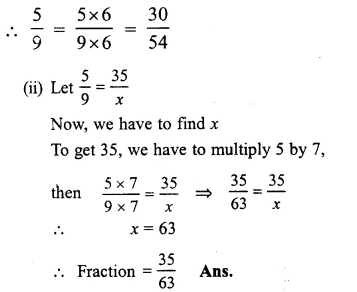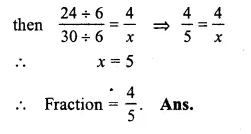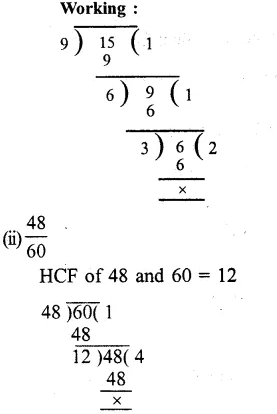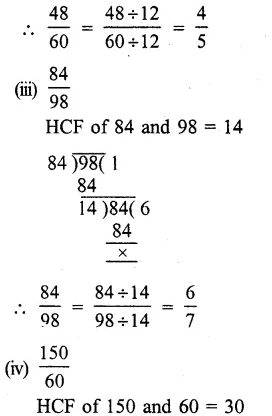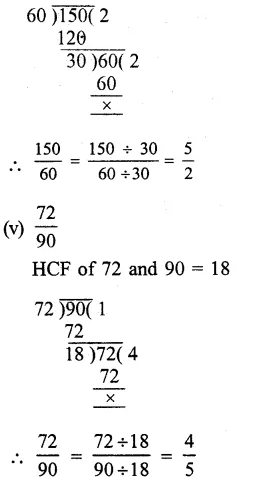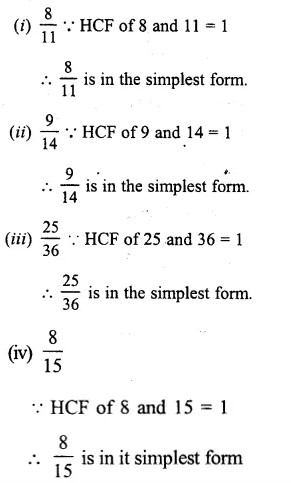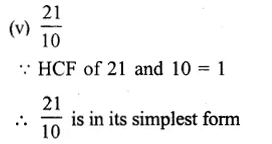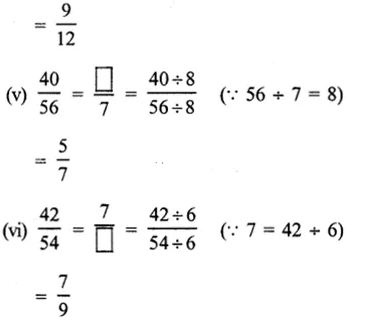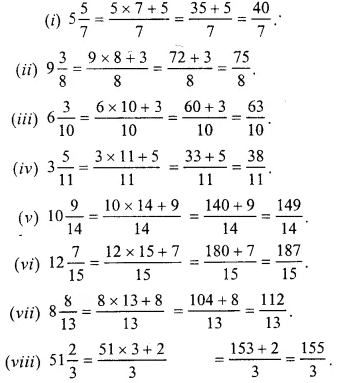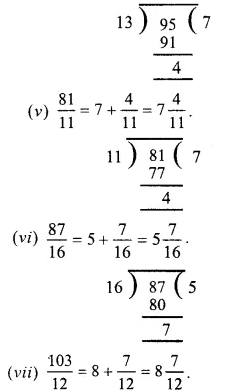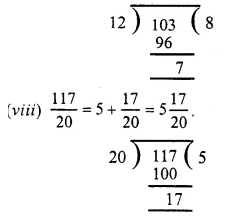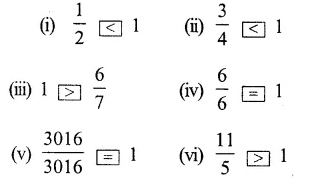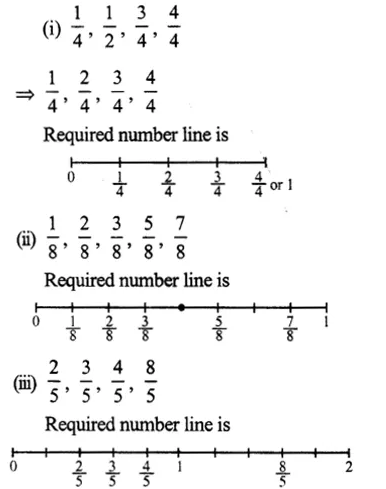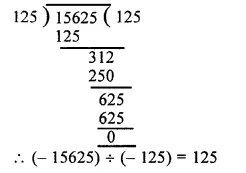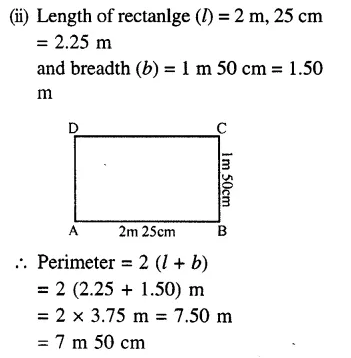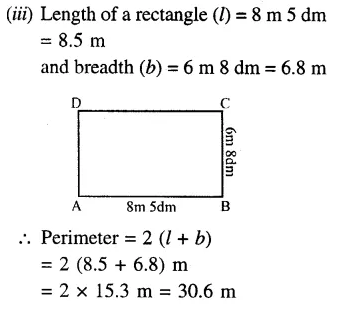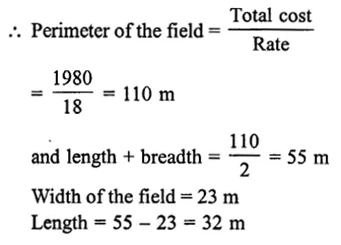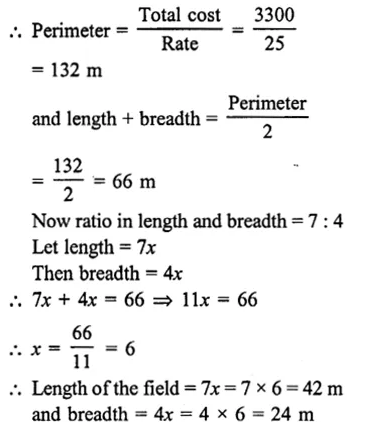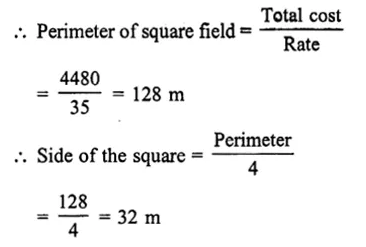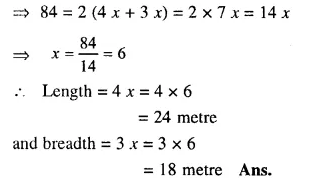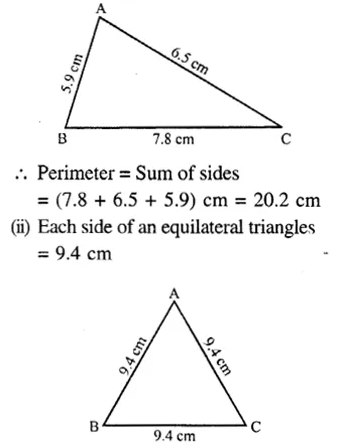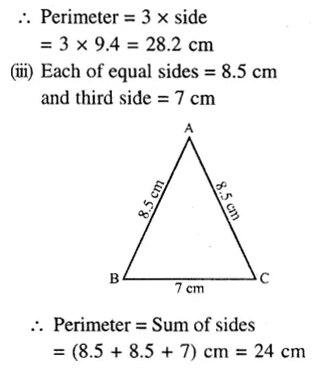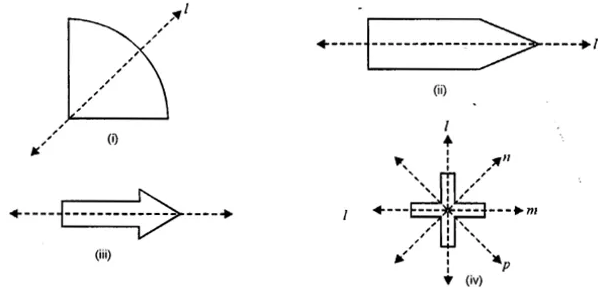RS Aggarwal Class 6 Solutions Chapter 21 Concept of Perimeter and Area Ex 21E
These Solutions are part of RS Aggarwal Solutions Class 6. Here we have given RS Aggarwal Solutions Class 6 Chapter 21 Concept of Perimeter and Area Ex 21E
Other Exercises
- RS Aggarwal Solutions Class 6 Chapter 21 Concept of Perimeter and Area Ex 21A
- RS Aggarwal Solutions Class 6 Chapter 21 Concept of Perimeter and Area Ex 21B
- RS Aggarwal Solutions Class 6 Chapter 21 Concept of Perimeter and Area Ex 21C
- RS Aggarwal Solutions Class 6 Chapter 21 Concept of Perimeter and Area Ex 21D
- RS Aggarwal Solutions Class 6 Chapter 21 Concept of Perimeter and Area Ex 21E
Objective questions
Mark against the correct answer in each of the following :
Question 1.
Solution:
Ratio in the sides of a rectangle = 7 : 5
and perimeter = 96 cm

Question 2.
Solution:
Area of a rectangle = 650 cm²
and breadth (b) = 13 cm

Question 3.
Solution:
Length of a rectangular field (l) = 34 m
and breadth (b) = 18 m
Circumference = 2 (l + b)
= 2 (34 + 18)m
= 2 x 52
= 104 m
Rate of fencing = Rs. 22.50 per m
Total cost = Rs. 22.50 x 104
= Rs. 2340 (b)
Question 4.
Solution:
Total cost of fencing = Rs. 2400
Rate = Rs. 30 per m
Perimeter of the rectangular field

Question 5.
Solution:
Area of rectangular carpet =120 cm²
Perimeter = 46 m
Now 2 (l + b)
= 46 m

Question 6.
Solution:
Let width of a rectangle = x
Then length = 3x
and diagonal = 6√10 cm

Question 7.
Solution:
Ratio in length and perimeter of a rectangle = 1 : 3
Let length = x,
then perimeter = 3x

Question 8.
Solution:
Length of diagonal of a square = 20 cm

Question 9.
Solution:
Total cost of fencing around a square field = Rs. 2000
and rate = Rs. 25 per metre

Question 10.
Solution:
Circumference = πd
= \(\\ \frac { 22 }{ 7 } \) x 7
= 22 cm (b)
Question 11.
Solution:
(a) Diameter = \(\frac { circumference }{ \pi } \)
= \(\\ \frac { 88\times 7 }{ 22 } \)
= 28 cm
Question 12.
Solution:
Circumference = πd
= \(\\ \frac { 22 }{ 7 } \) x 70
= 220 cm

Question 13.
Solution:
Length of the lane = 150 m
Breadth of the lane = 9 m
Area of the lane = (150 x 9) m²
= 1350 m²
Area of the brick = 22.5 cm x 7.5 cm
= 168.75 cm²

Question 14.
Solution:
Length of a rectangular room (l) = 5 m 40 cm = 5.4 m
and breadth (b) = 4 m 50 cm
= 4.5 m
Area = l x b = 5.4 x 4.5 m²
= 24.3 m² (b)
Question 15.
Solution:
Length of a sheet (l) = 72 cm
and breadth (b) = 48 cm
Area = l x b = 72 x 48 cm²
Area of paper for one envelope = 18 x 12 cm²
No. of envelopes = \(\\ \frac { 72\times 48 }{ 18\times 12 } \) =16 (d)
Hope given RS Aggarwal Solutions Class 6 Chapter 21 Concept of Perimeter and Area Ex 21E are helpful to complete your math homework.
If you have any doubts, please comment below. Learn Insta try to provide online math tutoring for you.

